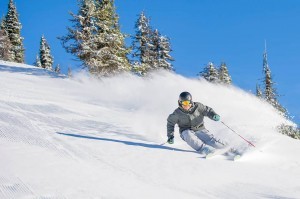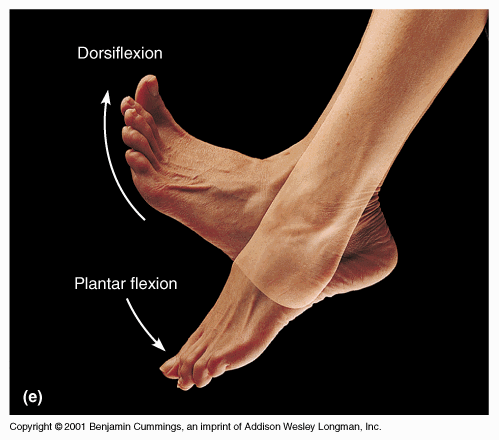Last week I had a ski lesson. And it was one of the times when I had an 'aha' moment. During the lesson the instructor, Sander, had me try doing big and small radius carving turns. [caption id="attachment_4577" align="aligncenter" width="300"] Sander showing how it's done. And I noticed something that surprised me. I felt smoother and skied better with small, quick turns than I did with larger turns. This was surprising because I would have thought that adding speed to a movement makes it more technical and thus more difficult. In the case of the turns when I performed small, quick turns there was a natural stretch reflex that flowed from one turn to the next. The momentum initiated the weight transfer, the rolling of the skis, the tall and short stature as well the angulation and inclination necessary to carve the skis. (had to throw in the part about inclination for Greg) If you're not a skier, don't worry. The take home message is that skiing with speed and quicker turns creates a momentum and a flow which makes it easier, for me anyway, to get on the edges of my skis. When I went to larger turns I was staying forward in my boot through the turn. This wasn't allowing the ankle to release and thus was blocking the chain reaction of events that should follow from the release of the ankle i.e. getting taller, realigning the knees, shifting the hips, achieving good angulation and inclination. It's kind of like trying to steer your car with the brakes on (I'm not a car guy, so cut me some slack here). When the brake is pressed through the floor you don't have the same freedom to control the car by steering it. Only once you release the brake can you regain more control...
When 'Sport-Specific' Training Isn't Specific to Sport
- Chris Collins
- Training
- 1470 Hits
- 9 Comments
-
Often times when we step foot in the gym it's with the intent at getting better at something. Maybe we want to accelerate our fat loss goals (a big one at this time of year). Or maybe we want to improve our joint function and move a little bit better. And then sometimes the goal is to perform better. Specifically with respect to sports. And this is my passion. Don't get me wrong it's very satisfying to hear of someone who's had shoulder pain for years tell you how they now sleep through the night because digging their elbow into the mattress to turn over doesn't wake them up anymore. (hello AV!) Or someone else who tells you how their hip pain has improved enough they can finally make a trip to their home country where there was not an unbandance of modern plumbing and thus had to be able to maintain a static deep squat. (BG will vouch for me on this one!) And then there has been countless stories of the many who have lost pounds and inches off their bodies. How their confidence and energy are at all time highs and life hasn't been better for them. These are all the things that make getting up when it's still cold and dark out that much easier. But when it comes to training for performance there's no comparison. That's when it gets fun for me. And here's the interesting thing. Sports performance and sports training are completely different. What? How can that be? Wasn't sports training supposed to be as 'sports-specific' as possible? (I put that term in quotes because it can so many different things to do different people) Actually no. Sports training is quite distinct from sports performance. And here's how. 1. Sports performance is on the...

